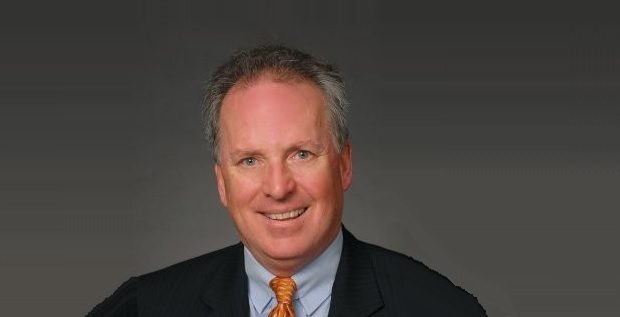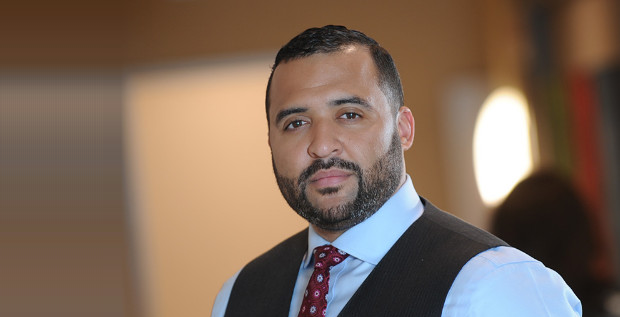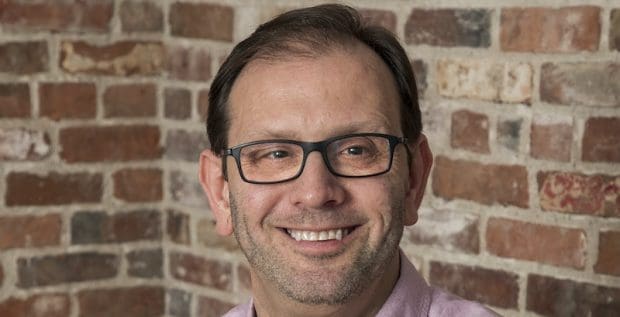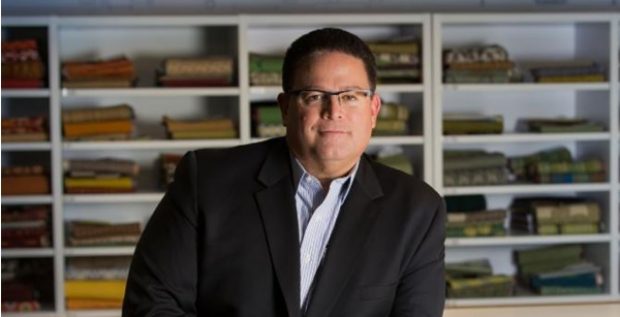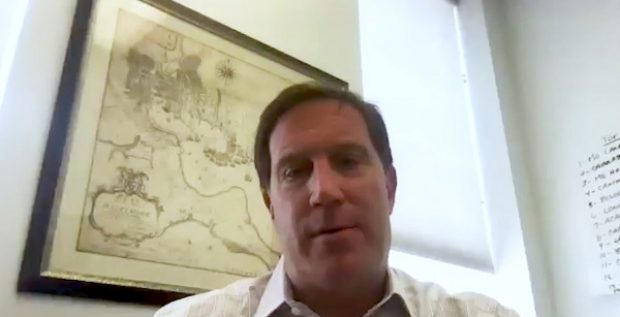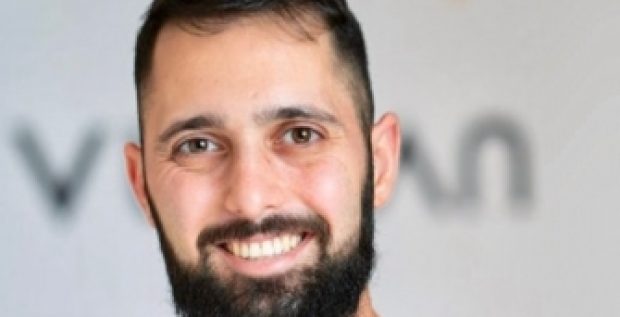Jason Kaplan is the CEO of Milestone Sports. Milestone brings wearable sensor technology and big data analytics together to create a revolutionary platform for consumers, retailers, advertisers, and manufacturers involved in the recreational sports market. Jason founded the company in 2012 out of a desire to provide athletes with insight into their performance that products like GPS watches and training apps could not capture. Since then, Milestone has gone on to win recognitions such as “Best Consumer Goods Company,” a title it received at the 2015 Maryland Incubator Company of the Year Awards last June. The company’s first product is the MilestonePod, a device that tracks runners’ mileage, pace, form, and other detailed data. Prior to founding Milestone, Jason was vice president of business development at Sensics.
Can you give us some background information about the company? What led you to start Milestone, and what were you doing previous?
JASON KAPLAN: I have two cofounders, and we all have different backgrounds. I have a background in technology. I have a cofounder who is a technologist. My background is more in the sales and business development side. Then I have a hardcore technology cofounder, and a cofounder who’s been very involved in endurance sports retailing. The three of us spend a lot of time talking about what it’s like to be runners, what’s it like to be a retailer, and what’s available in the technology world, and, from that, this idea was born. The idea was we really saw what we thought was a big opportunity to help all of the players; to help consumers run healthier, perform better, reach their goals; and also to help retailers solve a big problem, which is “how do we stay most connected to our customer, how do we drive loyalty, how do we drive repeat purchases?” So, we built this wearable marketing platform.
Tell us how the MilestonePod works.
Imagine you walk into a store today or you go online to shop—and we talk a lot about running because it’s the market we serve first, but we expect to be in other markets too—but imagine you walk into a store, and you get fitted for a running shoe, and some stores will spend 20-30-40 minutes with you. All these stores have one thing in common, which is when you walk out they lose you. Once you open the box, they have no idea whether you’re a guy that runs 80 miles a week, or whether you’re there just because somebody gave you a nudge to start exercising, and you actually never run at all. We thought, “Wouldn’t it be cool if we could build the technology that could be a part of your shoe or part of your activity, that’s really easy and low cost, and that was part of a platform wherein a retailer could give you messages based on your personal performance, your personal information—meaning from the device itself?” And that’s what we built.
What is the benefit for the consumer?
It’s good for the consumer because the fact of the matter is for runners, and for most sports, injuries happen, and people are trying to achieve goals. Most of the technology—there’s some phenomenal wearable technology out there—but most of it doesn’t actually help you perform better at a certain sport or get healthier after a certain sport. We believe that putting devices at what we call “the edge,” meaning on your shoe or on a racket or at the foremost part of the sport, is going to give you information that’ll actually help you run healthier, achieve your goals, play tennis better, be healthier when you play basketball—whatever it may be. It’s a little unique from other devices out there because it’s very purpose-built, focused specifically for the consumer on how do we help you achieve your goals and run healthier and better.
Have you always considered yourself a founder?
I’ve always thought about starting a company. That’s always been something that I’ve wanted to do. I’ve been very fortunate to be part of some wonderful technologies over the years, and just came together with a group of guys that thought we had an idea that could be pretty big. So, yeah, it’s exciting to be a part of the start.
Could you take us through some of the advantages for retailers? How is the technology changing the old sales model?
For retailers, one of the big challenges is “how do we get people back in the store, how do we stay connected?” It depends a little bit on what kind of retailer you are. If you’re a run specialty store—you know, in this area, Potomac River Running, or even the big guys like Road Runner Sports—you walk in the store, and as I said, they spend a lot of time fitting you for a shoe, but you think you’re ready for a new shoe, it’s just awful easy to go to an online site or to go somewhere else and buy that shoe. And so they need to find ways to extend their service in the store, outside. It’s kind of like a portable run lab, if you will. We like to say that we’re putting the retailer’s best run expert on one shoulder and their CMO on another shoulder and able to communicate really good running advice to help you perform better and healthier, but also to market to you at the proper times. We think that marketing is just really smart too, because consumers have said, “We’ll trade information about ourselves if you’re giving me something valuable back.” We all get email from certain retailers where we just hit delete—we never even look at it. Imagine if that retailer cut the email by 80%, but it was the right one for you and spoke to you at the right moment. That’s really what we’re trying to do here.
How did you and your cofounders all meet?
My cofounders and I met in kind of an interesting way. Both of the them are from Israel and are in Israel now. I worked for another local company that builds virtual reality goggles—you interviewed them at one point: Sensics—I actually had an office next to them, and I started to get to see them running around with these big virtual reality goggles and thought it was pretty cool, and I ended up working for Sensics, and it was there that I met Meir Machlin, who’s our CTO. He was in the U.S. for a while working here, and then when he moved back to Israel, we talked a little bit about different ideas. He and our third cofounder, a guy named Tzach Goran, they really started to get most active with the idea together, and then the three of us came together.
How did you come to be an entrepreneur?
That’s an interesting question. My father is actually a physician who worked after medical school at one practice for his whole career, so he didn’t set an example that way, but he was always curious, and I’m sure I learned some of the curiosity and interest in learning from him, but it was really that I just always had the bug. I always think that there’s cool ideas, there are ways to grow businesses and as a member of teams where I’ve joined companies as employee four, as employee 50, to build a sales organization I always see that the founders often can reap the biggest rewards, both from a monetary perspective, but a personal satisfaction perspective too. I just always wanted to build a company, and it’s funny because I ask myself—you know, you dream; it’s hard not to dream when you’re an entrepreneur: “what happens when we do something great, and I can’t imagine doing anything else?” I mean, I’m certainly never going to retire, and when this company explodes, and we do great things, then we’ve got several ideas to come at next.
Connect with Jason on LinkedIn




